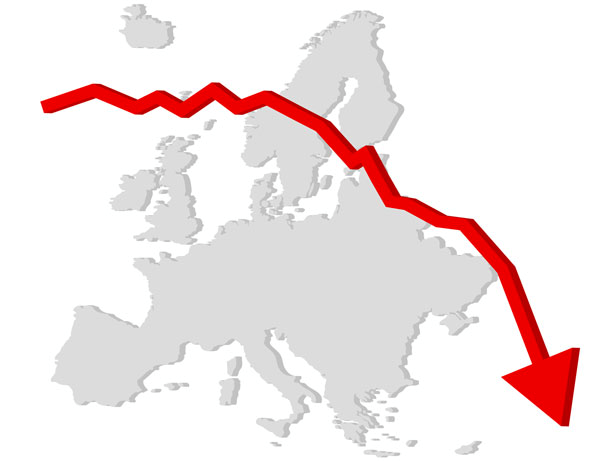18 July 2019
Recession
Are we already there?
by Frank O’Nomics
Whisper it quietly – the UK economy may be in the midst of a recession. The sotto voce request is a tacit acknowledgement that, by its very mention, the “R-word” can generate a self-fulfilling process by engendering a backdrop of fear and caution. But how can we possibly be in a recession? The technical definition is a period of at least two quarters of negative GDP growth, Q1 2019 actually registered growth (albeit modest) of 0.5% and we have yet to see the full data for Q2. However, even if we assume that the Q1 numbers are not revised down, there is a real risk that the Q2 data does show negative growth, and a similar number could be generated for Q3 – the quarter in which we now sit. Hence the suggestion – we may already be in a recession.
Optimists will respond by pointing out that unemployment is near record lows and real wages are, after a long period of contraction, showing positive growth once again. Apart from my usual warning of the dangers of looking at lagging indicators inherent in labour market statistics, there is plenty of evidence to suggest that the UK economy is, at best, stagnating. Let’s start with manufacturing. One of the preferred measures for assessing the situation is purchasing managers indices, where a figure above 50 indicates growth and one below a contraction. The current figure for June is at a 76-month low of 48.0, having fallen from 49.4 in May. Some of this correction may be due to an unwinding of stockpiles built up ahead of a feared no-deal Brexit at the end of March, but UK data is matched by much of Europe. Germany, Austria, Spain, Ireland and Italy, all have manufacturing PMIs of below 50.
You may wish to argue that manufacturing is a small part of the UK economy, and you would be correct. However, there is a similarly worrying picture when one looks at construction. Here the PMI, at 43.1, is at its worst level since the financial crisis and new orders data have fallen for 10 months in a row. Further, the malaise features in all areas, house building, commercial and civil engineering. Surely house price rises will help? Again the situation remains discouraging. Yes, prices overall are rising, but those in London have fallen for 8 months consecutively and the national figure has been less than 1% annualised for the last 7 months. The most important measure is that for the largest sector of the economy – services. Here the number does still sit above 50, but only at 50.2 having fallen from 51.0, and the British Chamber of Commerce has described the sector as “subdued”.
Will retail sales again save the situation? The levels of household finances would suggest not. The rise in consumer spending of 0.6% in Q1 was at the expense of the savings ratio (now at its lowest level since records began in 1963!) and a rise in net borrowing. In Q1 households spent £6bn more than they earned, registering the 10th consecutive quarter of net borrowing – a trend that cannot persist. This is supported by measures of consumer confidence, which fell to -13 in June, suggesting that any stronger retails sales data (which may be buoyed by some better weather) will be merely transitory.
While we have had a 10-year period of growth, 10 years is not unprecedented (the growth period prior to the financial crisis lasted 16 years). However, when the economy had some minor dips over the last few years, the authorities were able to intervene with a total of £435 billion of quantitative easing. Such measures may be resumed, and some economists do expect a rate cut this year, but this may be difficult at a time when inflation remains close to its target level, the threat to break out driven by a weak currency. The supposed ending of austerity may also help stimulate the economy but, despite the pledges of leadership candidates, resources are limited and the backdrop of a slowing economy in our major trading partner, Europe, may counter any stimulation. The elephant in the room is, of course Brexit. Deloitte’s latest survey of chief financial officers show 83% expecting the long-term business environment to deteriorate as a result of leaving the EU, and only 4% think now is a good time to increase risk on their balance sheets. The EY Item Club uses the Treasury’s model of the economy and now sees a contraction in business investment of 1.6% in 2019. Without this how can the economy grow?
These arguments are not a revelation. The Bank of England has already reduced its own forecast for Q2 growth to zero and the National Institute of Economic and Social Research has gone so far as to predict negative growth of 0.2%. There are factors that may mean that very modest growth is achieved and a recession avoided. Employment numbers and strong investment markets can help underlying confidence and the fall in sterling should support export growth and help to keep the economy buoyant. However, hoping to escape the Brexit process without a recession may be wishful thinking. Nevertheless, keep it under your hat – careless talk costs jobs.


